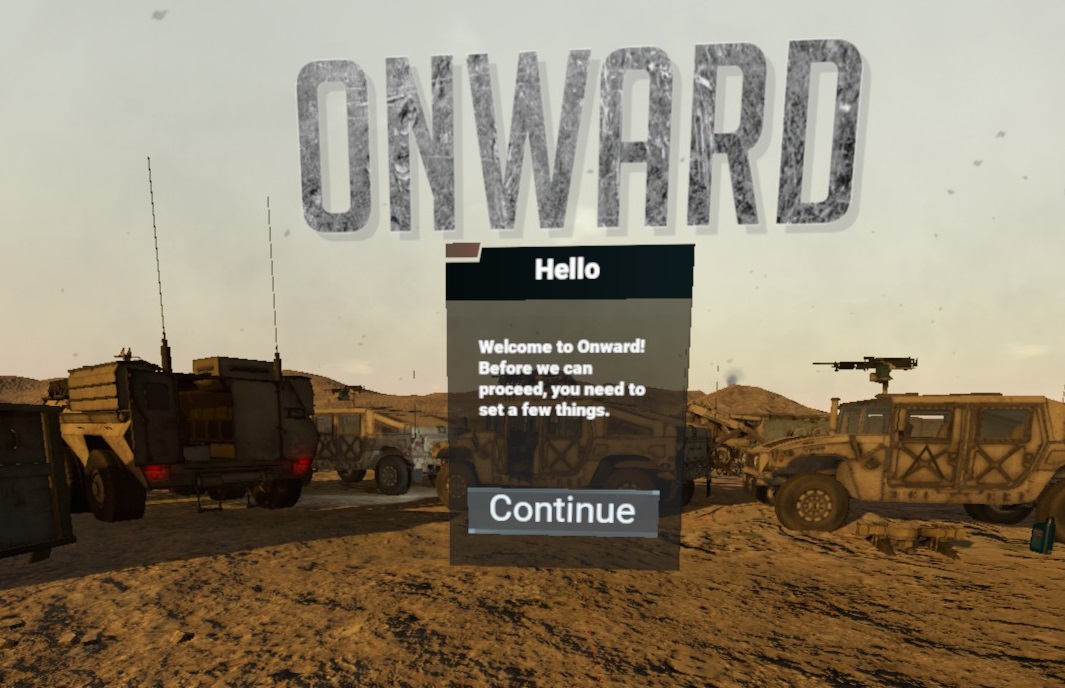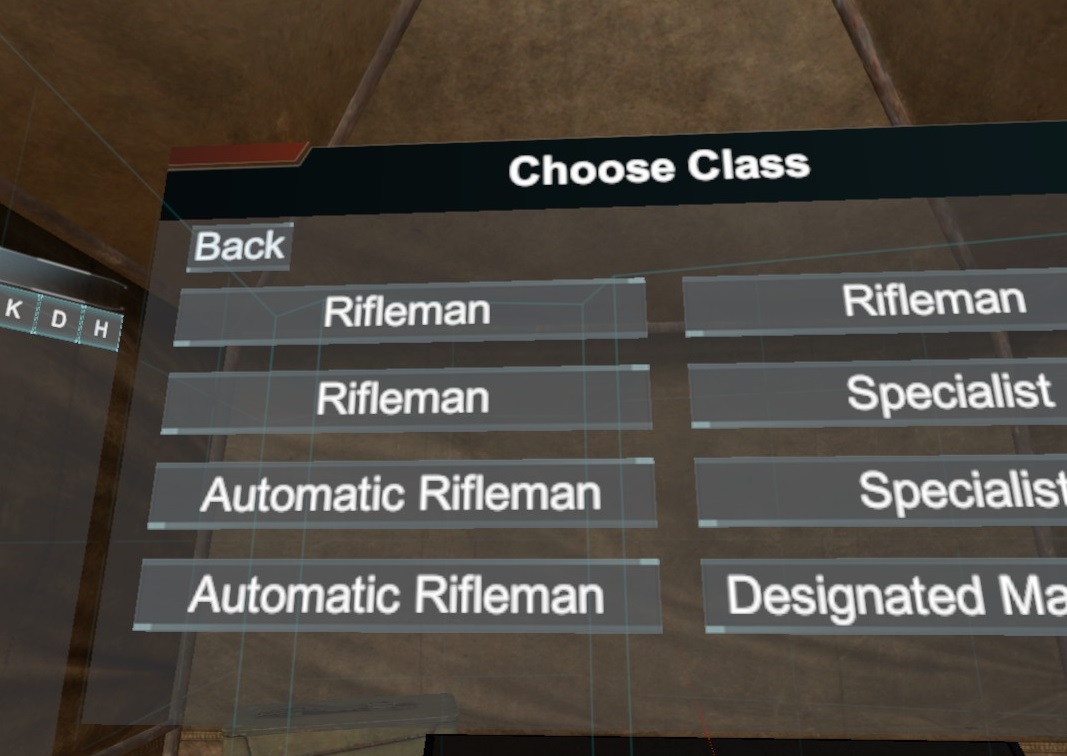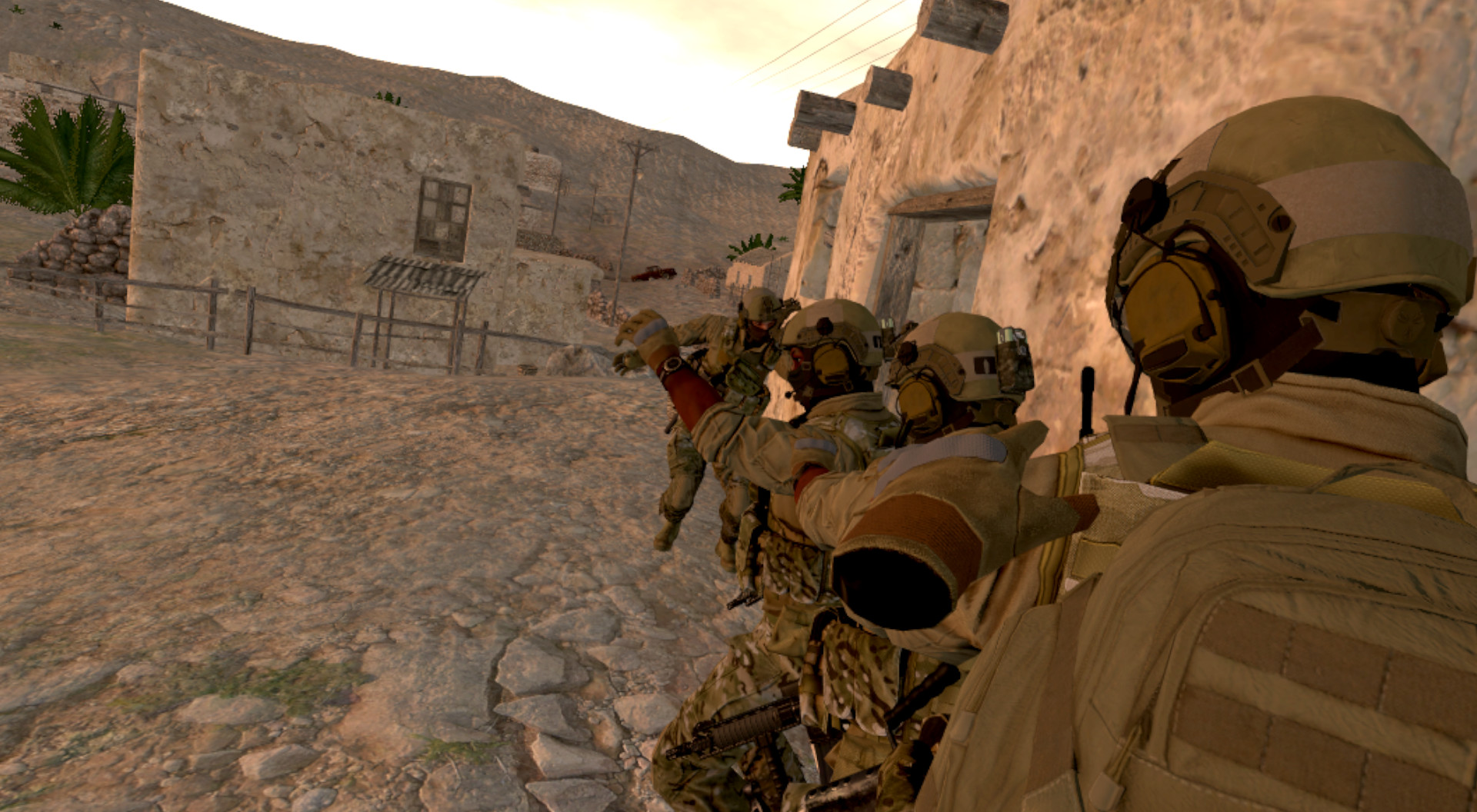Tactical Warfare In VR: 'Onward' Is The VR Shooter For Military Simulation Fans
Onward is a blueprint that showcases what first person shooters in VR should look like, but if ARMA isn’t your type of game, you should probably wait until something with more action comes along. Don’t expect Battlefield-like gameplay. Onward is a warfare simulation, not a fast-paced action game.
First person shooters have been a staple video game genre for decades. You can’t go to an event such as PAX or E3 without encountering a fist-full of new entries to the tried-and-true genre. Shooters in VR are becoming quite popular, but there are only a few examples of typical competitive FPS games. You won’t find the likes of Counter-Strike, Battlefield or Call of Duty in VR. You won’t even find classic single player shooters such as Half-Life or Doom. Most VR shooters are limited to stationary positions, in which you aren’t much more than a glorified turret.
There’s good reason for the industry’s reluctance to embrace the familiar first person shooter games for VR. Traditional locomotion methods, which these games rely on, don’t lend themselves well to virtual reality. It’s well known that unnatural movement initiated by joysticks on a gamepad can cause motion sickness in many people, especially if you take control of the camera away from a player’s head. The alternative tends to be some form of teleportation method, which doesn’t allow for the most balanced game. Because of these limitations, few developers have attempted to make a proper VR FPS game.
There are plenty of first person gallery shooters for VR. Space Pirate Trainer, A10 VR and The Brookhaven Experiment come to mind. You could classify EVE: Valkyrie as a first person shooter too, but it’s not a classic boots-to-the-ground, gun-in-your-hand kind of game. Hover Junkers attempted to fill the need for a true shooter, but you’re still not technically on-foot in that game, either.
Downpour Interactive’s Onward is the first traditional team-based FPS that we’ve encountered for the HTC Vive. The game has more in common with ARMA, a realistic war simulator, than it does with Battlefield. It’s still worth your attention, if only as a glimpse of the possible future of FPS games.
Getting Started
Downpour Interactive launched Onward on August 30 as an Early Access title on Steam. The game is playable in its current state, but it is a long way from being complete. As such, the developer has not incorporated any form of tutorial into the game. There is a shooting gallery, but you’ll be on your own to figure out how the guns operate. Fortunately, Downpour Interactive uploaded a tutorial video to YouTube and the game’s Steam page. The developer (and us) highly suggests watching the 8-minute long tutorial video. Otherwise, you’ll probably have trouble using your equipment and weapons. The tutorial video will walk you through everything you need to know about the intricacies of your various weapons and how to use the gear you will be carrying on the battlefield.
Onward’s weapon mechanics are complicated. First person shooter games usually play a complex animation when you reload your gun, but in VR, you have to do it all yourself. Some games offer a simple action for reloading, such as Hover Junker’s thumbpad reload method, or The Brookhaven Experiment’s squeeze reload method. In Onward, you have to pull the clip out, insert a new one, and then cock the action before you can fire again. The reload process takes a few seconds to complete, and you’re completely vulnerable while you perform the task. You can’t even pull out your sidearm as a last resort until you holster your primary weapon. It’s a good idea to practice reloading at the firing range before you jump into an online match.
Get Tom's Hardware's best news and in-depth reviews, straight to your inbox.
Just like the real thing, it takes two hands to operate your primary weapon properly. You can technically fire your rifle with one hand, but your shots will not be accurate. To stabilize the barrel, you’ll need both hands, but in VR that’s somewhat of a paradox. The game insists that you hold your two controllers in the air as if you’re holding a rifle, but unlike a rifle, there’s nothing physical to keep the barrel steady. You can butt a real gun against your shoulder to increase stability--A crucial technique for snipers. Some players have taken to building homemade gun stock solutions out of PCB tubes or wood, which likely gives them a significant advantage in the game. This game perfectly exemplifies the need for peripheral attachments in VR.
In addition to the primary and sidearm weapons, you carry a single grenade, a syringe to heal yourself or a teammate, a knife, a radio to communicate with your squad and a tablet that provides map information. You will find all of these items on your person, and you’ll access them simply by grabbing them with your hands. You will find your main weapon strapped to your abdomen or hanging from a shoulder strap. Your sidearm is attached to your right hip, and your grenade is on the right side of your chest. The syringe rests close to your belt buckle, and you’ll find both the radio and knife on your left shoulder. Press the trigger to activate the radio and squeeze the grips to pick up your knife.
Moving Without Moving
The tutorial video also introduces you to the locomotion method in Onward. As you can imagine, the popular teleport movement method doesn’t fit well with a first person war simulation. Onward adopts the touchpad locomotion system that StressLevelZero used for Hover Junkers. Your left-hand touchpad dictates the direction you will move. Think of it as the WASD keys. The touchpad will let you move forward and back, and strafe left and right, but it's up to you to point your body where you want to go and to aim your weapon where you want to shoot.
The touchpad mechanics work, but it’s still a compromised solution. If you browse the /r/vive subreddit, it's not hard to find stories of people declaring that they refunded the game due to motion sickness. You’ll also find plenty of players professing their love of the game. It’s fair to say the opinions of the player base are divided on the subject.
Everyone has different tolerances to vestibular mismatch (The difference between what your eyes see and what your inner ear perceives). Personally, I did not experience any motion sickness while playing Onward, but I did experience minor vertigo. The transition from being stationary to moving feels odd. The best way I can describe it is that it feels similar to standing on a transit bus when it starts moving. I briefly lost my balance and stumbled the first time I pressed on the touchpad to move. It didn’t take long to get past that feeling, though. Within one match, the movement action was no longer bothersome to me.
Volk Or Marsoc?
There are to factions in Onward: Volk, which sports the camouflage garb, and Marsoc, which have black fatigues. You’ll find helmets for each team on the table in front of you when you enter the lobby room. To select a team, pick up a helmet and put it on your head.
Both teams have access to the same classes of soldier. You can be a Rifleman, which can choose from four different semi-automatic rifles with a selection of different sight options, including red dot and 4x scope. You can also choose between foregrip or flashlight attachments.
Automatic Riflemen get to choose from a handful of automatic rifles, and the Specialist class gets access to more exotic automatic weaponry, such the FN P90. Finally, each team has a Designated Marksman class. These guys get high-powered, long-range rifles equipped with 10x zoom scopes meant for sniping.
In its current form, Onward supports four-man teams, but the developer plans to increase the player count to eight players per team and hopes to expand it to 12v12 eventually. As it stands, players have mostly free reign to choose whichever class they desire. There are three Rifleman slots, so there’s never a fight for that class. Each team also gets two Automatic Rifleman, and two Specialists, so every player on the team can have an automatic weapon if they desire. The demand for the Designated Marksman outweighs the supply. Each team has one sniper slot only. When the player count increases to eight players per team, you won’t have as much freedom of choice. There will be a player for every class position.
Waiting, Waiting, Waiting
Before you can start a match, you’ll have to join a match lobby. Prepare to wait for a while, though. When the game first launched, the developer hadn’t thought to include a match counter. You could connect to the lobby of an in-progress game and find yourself waiting for over 10 minutes for the match to complete. The current build of the game includes a match timer, so you don’t have to waste that much time finding a game. That doesn’t mean you won’t be waiting, though.
When you find a lobby of players waiting to start, you’ll often be waiting for the server to fill up, and then you’ll be waiting for players to select their loadout and ready-up. The game has voice chat enabled in the lobby so that you can chat with the other players on the server. It doesn’t matter which team you are on; the entire server gets to speak with each other in the lobby.
There’s not much else to do in the lobby right now, but Downpour Interactive has plans to make the wait a little bit more interesting. There is a shelf full of guns behind you that you will eventually be able to fire. At this time, the guns are just static models that you can pick up, but they will be functioning weapons in a future update.
On The Battlefield
Once the match finally loads, you and your squad will spawn together on one side of the map. Onward’s large maps are excellent for snipers. If you happen to snatch up the Designated Marksman class, you’ll enjoy the comfort of hiding in the hills or rooftops and picking off your enemies from a distance. The other classes don’t lend themselves well to flying solo, though.
Working together is your best bet. The maps are huge, so it’s easy to lose track of your teammates if you don’t stay close to each other. Having a friend by your side can mean the difference between surviving a gunshot and bleeding out on the ground. When you take a shot, you often go down before knowing where it came from. Unless you have a teammate by your side, the syringe you carry for just such an emergency becomes useless. A friend can revive you, but you can’t save yourself once you’re incapacitated.
It’s also a good idea to storm rooms as a team—this is a war simulator after all. You never know what you might encounter through the next door. Trust me; you want to be entering that room with a partner, lest you find the opposing squad lying in wait. Tactical prowess will get you a long way in this game.
Future Updates
The developer launched Onward as an early access title so that the developer can mold the game based on community feedback. Downpour Interactive said that it plans to have a 10 to 12-month early access cycle as it completes the game. The final game will include additional maps and game modes, and the developer plans to “improve weapon models and sounds effects, and better the user experience throughout early access development.” Downpour Interactive has already made good on that promise. The game launched on August 31, and in the first ten days, the developer has already released four updates and multiple bug fixes.
Downpour Interactive also released lists of near-term and long-term update goals for the game. Short-term improvements include adding two or three more maps, putting a GPS monitor on your wrist, and getting the guns in the lobby working (among other things). The developer also plans to add multiple game modes, including VIP escort missions and Spec-Ops mode, which will limit Volk to night vision and knives. There are also plans for a Tactical Domination mode, which will allow players to respawn, but only when their team captures an objective.
Downpour Interactive’s long-term goals for Onward include a ranking system, co-operative missions with AI soldiers, climbable ladders and environment objects, and the ability to drag bodies out of sight. The developer also intends to add another lobby room where teammates can discuss tactical strategies before deployment.
Onward is available for the HTC Vive through the Steam store. The game will be in early access for the better part of the next year, but if this game interests you, you might want to get it while it’s still in development. The developer is selling the game for $24.99, but there will be a price increase once the game is complete.
Kevin Carbotte is a contributing writer for Tom's Hardware who primarily covers VR and AR hardware. He has been writing for us for more than four years.
-
Jeff Fx >Onward adopts the touchpad locomotion system that StressLevelZero used for Hover Junkers.Reply
Thanks, you stopped me from buying a game that I'd find unpleasant. Other than teleportation, arm-swinging is the only locomotion method that doesn't make me sway. -
JQB45 I'd consider buying this game, I like the realism. Graphics are not great but the game play it self looks fantastic. Now just have to hope my childhood motion sickness issues do not become an issue now. :ouch:Reply
The developers know where your hands and head are, how hard could it possibly be to draw human arms attached to those hands? -
Sharky36566666 Love the idea and the concepts. A map idea for you. an office building. A 4 floor 4 building complex with long sky walks connecting the 4 buildings on the top 3 floors in a square shape footprint. Perhaps with parts of its roof on fire. One team spans at the top, and has to get to the bottom ( or kill all other team) the second team starts at the bottom and has to get to the top ( or kill all other team). The open area building floors will also have some smaller offices as well, allowing for a range of combat style and weapons. The long 'glass' sky walks are perfect for effective troop movement, but also perfect for snipers.Reply
You can incorporate repelling from the fire escapes, all the room clearing tactics would be key, hide and seek, could be very intense, anti personal devices like proximity sensors and motion tracking assets the users can place around.







